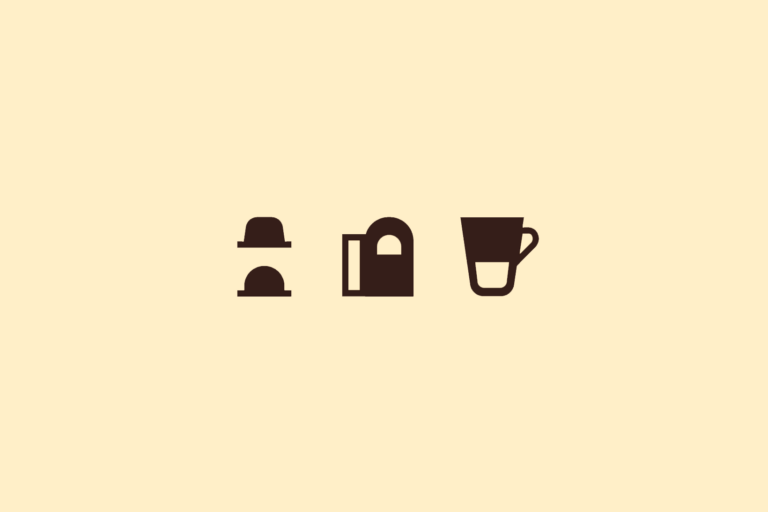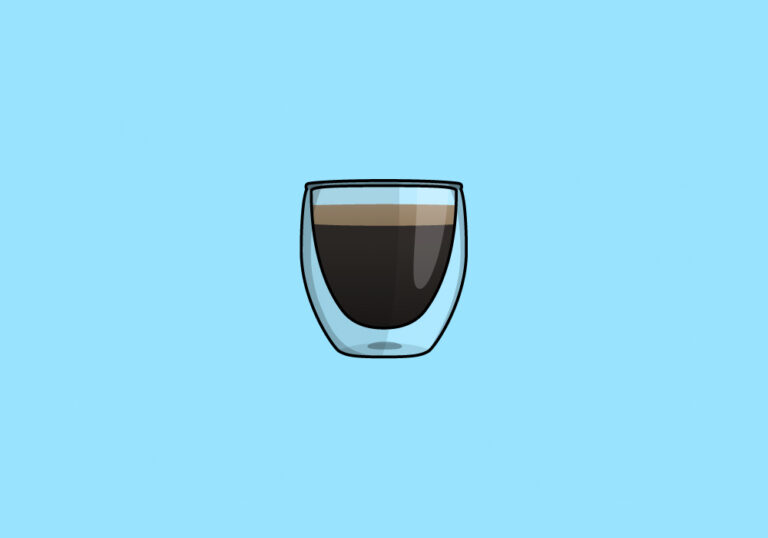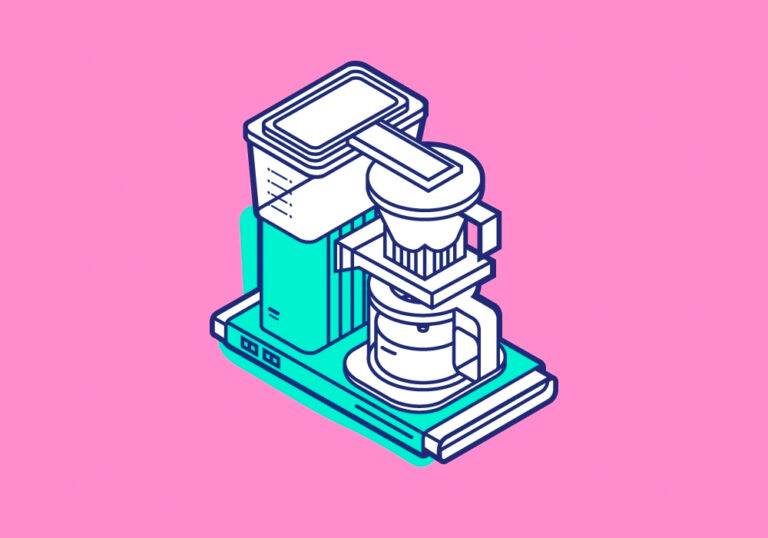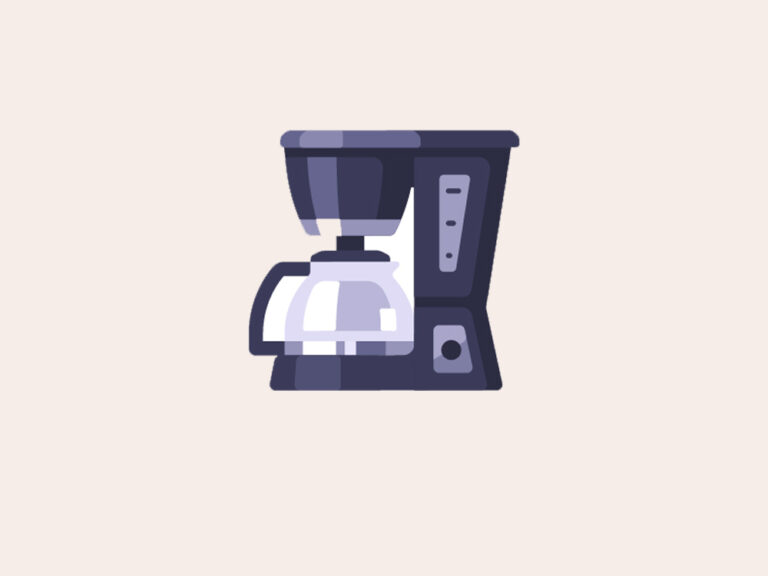
This post may contain affiliate links. As an Amazon Associate and a partner of other brands, I get a small commission if you purchase through my links, at no extra cost from you.
You find yourself struggling between buying a french press or a Chemex and you want to check in the Chemex vs French Press debate.
You have a choice to make!
What if you could an expert’s opinion on the matter?
Let’s dive into the world of these two coffee-making devices and see what makes them so special, what are the differences between these two coffee methods, and more.
What Is A Chemex?
A Chemex is a glass coffee maker.
It is made of non-porous Borosilicate glass, which is said to allow the flavor of the coffee to come through.
It has a wooden collar around its cylindrical neck. The filter basket, which holds the coffee grounds, sits on top of this collar.
There are six small holes at the bottom of the filter that allows water to go into it while being able to filter out any sludge that may have gone into it.
This method ensures that all you are drinking is your freshly brewed cup of joe without even an aftertaste.
Parts of A Chemex
1. The Coffee Beaker
Shaped like an hourglass, the glass is large at the bottom and narrows as it reaches to the top.
This makes it easy to hold and also keeps it cool while brewing.
The thick glass is non-porous, which keeps it from taking on any odors or flavors.
The shape of the glass keeps the coffee concentrate near the middle while serving to keep your hands away from any heat generated by your coffee maker.
2. The Filter
Made of bonded paper, the filter sits on top of the wooden collar
It doesn’t go all the way to the bottom because there are six holes at the bottom to let water pass through.
When you put ground coffee in it, pressure is created as air pockets form between the grounds and this forces hot water to go through your coarse grounds.
It passes through tiny holes that are very similar to those made for drip coffee makers.
This means that not even a tiny sludge will be able to pass through those holes, ensuring that you only drink the good stuff.
3. The Wood Collar/Sleeve
This is the ring-like sleeve that goes around the neck of the Chemex.
It is made of wood and has six small holes at the bottom that allows water to flow through it while filtering out any sludge.
The water will go through these holes, filter your coffee grounds, and deliver you a perfectly brewed cup of coffee.
It is advised to give this wooden collar a good cleaning after every use to ensure that no residue or other elements are building up in it.
4. The Outer Container
This is where you set your glass container when pouring out your freshly brewed coffee.
This part is usually made of wood, but can also be made of plastic.
Since it is there to support the weight of the glass, it doesn’t do anything else other than that.
How Does The Chemex Work?
The Chemex uses a simple process.
You place your freshly ground coffee in the paper filter, place it on top of the wooden collar, pour hot water over it, and wait patiently until the grounds have taken in all the water.
This will extract all their flavors and aromas.
Over time this process will start to extract some sediment which is what you get when you pour your coffee into another coffee maker like French Press.
The only difference between these two processes is that French Press has you pressing all the grounds out of your coffee while Chemex’s method of extraction allows for no more than 30 seconds of contact between gravity and coffee grounds.
This contact time allows the coffee to drip through slowly. You can choose to keep it on for much longer if you prefer a stronger brew.
It is always recommended that you never pour out your coffee before it has finished dripping through.
This requires patience, which you will have to learn to master if you are going to enjoy the Chemex process.
What Is A French Press?
The French Press invention goes back to the year 1923.
The idea and design of the french press came from an Italian named Ugo Paolini.
A French press is a type of coffee brewing method that involves the use of manual pressure to extract flavor and oils from coffee while brewing it.
This method is usually said to produce a sweeter and richer taste than that of other brewing methods.
In fact, the process is said to produce the perfect cup every time.
Related Article: Best Coffee for French Press
How Does A French Press Work?
The French press consists of a stainless steel mesh filter placed inside a press pot.
The mesh filter does not allow any water to pass through but lets the brewed coffee drip through slowly into a carafe underneath.
The company Bodum is credited with creating one of the first French press coffee makers.
The method involves placing ground coffee beans inside the carafe.
You will then pour near-boiling water over it, stir, and wait for it to brew. Be careful not to let the grounds overflow into the mesh filter as that can affect your taste.
Typically, you are advised to wait for 4 minutes before pouring out your coffee into a cup.
This is because two minutes will usually be needed for adequate extraction while letting it sit on its own for another 2 minutes allows any sediments or sludge to settle at the bottom of your carafe before being poured out.
The primary benefit of a French press is that it attempts to extract all the wonderful flavors and aromas from your ground coffee.
This is not something that can be done in a standard drip or drip coffee maker.
Since the grounds are not being touched during the brew, they remain clean and distinct allowing you to enjoy these aromatic flavors.
The downside, however, is that it does take significantly longer to make your coffee.
This method also makes for a more flavorful experience if you let your coffee brew for a longer time period.
The Parts Of A French Press
The French press is made up of a glass pitcher and a plunger.
When you put freshly ground coffee in it and add hot water, the water pressure will force the grounds straight down into the container, separating any sediment and oils from them.
This method doesn’t require you to use gimmicks like filtering machines in your kitchen. It is all about technique with this one.
1. The Plunger
When you put the plunger on top of your glass, you can directly pour hot water through it.
This will force any sediment and oils from the coffee grounds to the bottom of your glass.
The plunger will then let go as a result of this pressure, letting your coffee ‘spit’ into a carafe below.
2. The Filter Mesh
This is what separates the sediment from your ground coffee.
It will allow your brewed coffee to go through while stopping anything from going through it.
This way you get a clean, rich cup of coffee minus any sediment or sludge.
3. The Glass Beaker
The glass container is basically the bottom half of your french press.
It should be made up of a thick-walled glass that allows no outside elements to be introduced inside it through friction or heat transfer.
4. The Lid
The lid is a specialized piece of plastic that makes sure you can enjoy your coffee without being exposed to its very hot temperatures.
It keeps coffee warm for a longer period of time.
All you have to do is to wait for your coffee to cool down a bit, then remove it from your cup and pour it into a mug or a carafe.
5. The Stainless Steel Mesh Filter
This is the part where all the magic happens.
When you place your coffee grounds inside it, they will be exposed to hot water until they have been pushed through the mesh filter.
This will extract as much as possible from them as well as any sediments or oils from them.
Then it will slowly drip through into the carafe below while catching any of its remaining flavors behind it.
6. The Filter Cross Plate
This is what gets placed inside the filter mesh to ensure that you can enjoy a smooth cup of coffee without any sediment or sludge.
It will also ensure that you are able to place your filters in the top part of your brewer without them spilling through.
These are the main parts of a french press that you need to know and of course, there are a few tiny pieces of the entire unit that we won’t discuss.
Chemex vs French Press – The Main Differences
Now that we’ve seen how each works, let’s talk about what makes them different from one another.
1. Capacity
Chemex has the highest brewing capacity. It is capable of holding up to 10 cups of coffee at a time.
On the other hand, the French press will hold only 8 cups.
2. Time Required For Brewing
The French press has minimum contact with water, which makes it faster than the Chemex process.
That being said, it still depends on your brewing technique whether or not you will be able to meet that minimum amount of contact time needed for extraction to take place.
The Chemex requires about 5 minutes for extraction, with 30 seconds added for every increase in cup size.
In terms of the coffee-to-water ratio, the Chemex is able to reach a 1:15 ratio while its counterpart can only do up to 1:12.
This translates into 1-2 more cups of coffee from 1 bag of coffee beans.
3. Water Contact Surface Area
The Chemex has a wider body, which makes it easier to pour water into it.
On the other hand, the French press has a taller beaker, making it difficult to get more of its coffee in your cup.
This is because if you pour too much water into this one, the grounds will overflow and affect the taste of your coffee.
Chemex vs French Press – The Pros of Both Coffee Makers
These two coffee makers are each great at making coffee.
They are simple to use, require little to no effort in terms of cleaning, are affordable, and can be used for years.
Affordable
You don’t have to spend a lot on these two products in order to get your hands on one.
The Chemex costs around $25 while the French press will set you back around $10-$15.
This makes them great products for tight budgets.
Easy To Clean Up After Use
The Chemex has a smaller filter area than the French press, which makes it easier to clean up each time you use it.
It is also easy to make sure that you properly rinse out your filter after each use.
No Molds, No Rusts, No Coffee Stains.
Both of these coffee makers will never give you any problems of this sort since both are made of glass.
As long as you keep them rinsed every time you use them, they will last for years and years like their owners like it!
Good For Traveling
If you love drinking your coffee whenever and wherever then these two products are definitely for you.
They are both very light and easy to carry around with you wherever you go, so long as they don’t break off in transit!
No Electricity Required
Because these products do not require any electricity, they can be used almost anywhere without worry of accidents such as electrocution or power outage destroying your product.
Immune To Changes In Temperature
When you use a Chemex or a French press, the temperature of your water will remain stable no matter what.
This is because there is no power needed to keep it warm after you have brewed your coffee.
Take note, however, that this only applies if you brew your coffee using already boiled water from an external source.
If you use cold or tap water to brew your coffee instead, then the temperature of the latter may vary as it heats up.
Easy To Use
These two products will definitely make coffee-making much easier for you.
You don’t have to use any power to use them and they do not involve any complicated adaptations either.
Also, all you need to do is to pour water and pour your coffee grounds before letting everything brew.
Easy as 1-2-3!
The Downsides of The Chemex
Longer To Brew
You need to use special paper filters to brew with this method.
This is because it requires the coffee to steep for a longer time, which results in a different type of taste.
On the other hand, the French press will take only about 8 minutes to brew through and is far more effortless and simple for most users.
Wider Body Means Drip Issues
The Chemex has a wider body than its counterpart, which means that water will spill out of it easily unless you place your filter into that wider body first before putting any remaining grounds inside it.
It is also difficult to pour water into the Chemex as it has a narrower opening than its counterpart does.
Produces Less Coffee
Because the Chemex takes a longer time to produce coffee, it is best to use it with larger filters and at least 4 scoops of coffee beans.
It will also require that you use more ground coffee than you would normally use for a French press.
If you want to make enough caffeine for several people, then this method is not so good for you as it will take longer than making enough coffee using the French press.
Requires Speciality Coffee Beans
The Chemex requires specially roasted coffee beans for its smooth taste, while the French press works with any type of coffee beans.
That means that you will need to get specialty coffee beans to get the best results!
The Downsides of the French Press
Less Capacity
You will only be able to brew 8 cups of coffee with the French press at most before you have to stop, while you can use up to 10 cups in the Chemex.
This is because your coffee grounds will overflow when you are using this coffee maker with large filters.
You can still use smaller filters in this one, which means that you are more likely to encounter overflow issues when using this product.
Requires Fewer Filters Than The Chemex Does
The French press requires only two paper filters for brewing, while the Chemex requires several specialty filters in order for it to work well.
This can get to be quite an issue for lots of people, especially if they are on a budget or looking for convenience.
Harder To Clean Up
The Chemex is easier to clean up than the French press, which means that it is less time-consuming and more convenient for you.
All you have to do is to rinse the filter off after use and then let it dry off before putting it away.
You can also do this by throwing away the used filter when cleaning up after using your product.
The French press, however, requires that you scrub out the grounds in order to make sure that there are no coffee particles left in your product when rinsing it off.
Risk Of Overflowing
French press coffee makers are notorious for overfilling their contents, which means that you need to be careful when using them.
If you are not very careful when pouring your coffee grounds in, then you risk spilling out your product, which can make a mess of things!
Flavor & Caffeine Strength
The coffee flavor of this product is very strong due to the longer time that it needs to brew.
This is one of the reasons why people prefer this method over most other coffee makers out there.
However, it also means that the grounds will overflow the coffee maker if you use it with larger filters, which can ruin both your counter and your coffee maker if it happens!
Less Convenient
The Chemex is often considered better than the French press because it requires less effort to use and is very easy to clean up after use.
The French press has a filter that needs scrubbing and rinsing off before you can put it away or use it again, which can be quite a drag for some people.
Brewing Capacity
The Chemex produces coffee for up to 10 cups of coffee, while the French press is limited to 8 at most.
This means that if you want to make lots of coffee or coffee for several people, then the latter may not be a good choice for you.
Final Thoughts About Chemex vs French Press
As I always say, there’s no “best brewing method” or “best coffee maker”.
It all comes down to each person’s preference and what they are looking for in a coffee maker.
The Chemex vs French Press debate is now over! I hope this article helped to answer some of your questions!




![The 6 Best Japanese Coffee Brands To Buy [2023]](https://noisycoffee.com/wp-content/uploads/2023/02/Best-Japanese-Coffee-Brands-To-Buy-noisycoffee-768x560.png)

